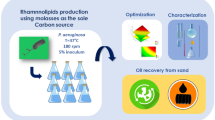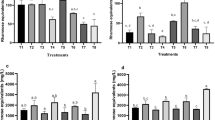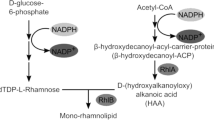Abstract
Rhamnolipid has been known as biosurfactant which is produced by Pseudomonas aeruginosa in fermentation process. Several carbon sources such as ethanol, glucose, vegetable oil and hydrocarbon have been used to produce rhamnolipid. In this study, we are trying to use molasses which is a waste product from sugar industry as carbon source to produce rhamnolipid. The bacterium which was previously isolated from Iranian oil over years Glycolipid production by isolated bacterium using sugar beet molasses as a carbon and energy source was investigated. Result from the study showed that the growth of the bacteria using molasses as carbon sources is growth-associated. The specific production rate of rhamnolipid with 2%, 4%, 6%, 8% and 10% of molasses are 0.00065, 4.556, 8.94, 8.85, and 9.09 respectively. The yield of rhamnolipid per biomass with 2%, 4%, 6%, 8% and 10% molasses are 0.003, 0.009, 0.053, 0.041 and 0.213 respectively. The production of rhamnolipid (0.0531 g. rhamnolipid/g biomass) is higher compare to the culture grown in aerobic condition (0.04 g. rhamnolipid/g biomass). These studies indicate that renewable, relatively inexpensive and easily available resources can be used for important biotechnological processes.
Similar content being viewed by others
Author information
Authors and Affiliations
Corresponding author
Rights and permissions
About this article
Cite this article
Rashedi, H., Mazaheri Assadi, M., Bonakdarpour, B. et al. Environmental importance of rhamnolipid production from molasses as a carbon source. Int. J. Environ. Sci. Technol. 2, 59–62 (2005). https://doi.org/10.1007/BF03325858
Published:
Issue Date:
DOI: https://doi.org/10.1007/BF03325858




